How to create a transparent stamp from an image
Creating transparent stamps from existing images is pretty easy!
PDF Annotator comes with a large set of default stamps, like symbols, arrows, and text stamps. In addition, you can create your own stamps from various sources. For example, we have looked into creating custom text and date stamps before.
But sometimes, we need a stamp based on an image source. This could be a logo, some custom graphics, or even a scanned signature.
Creating a stamp from an image is pretty straight forward. All we need is the image file.
First, we click the File, New command, so we have a blank new document, which we'll need as a scratchpad.
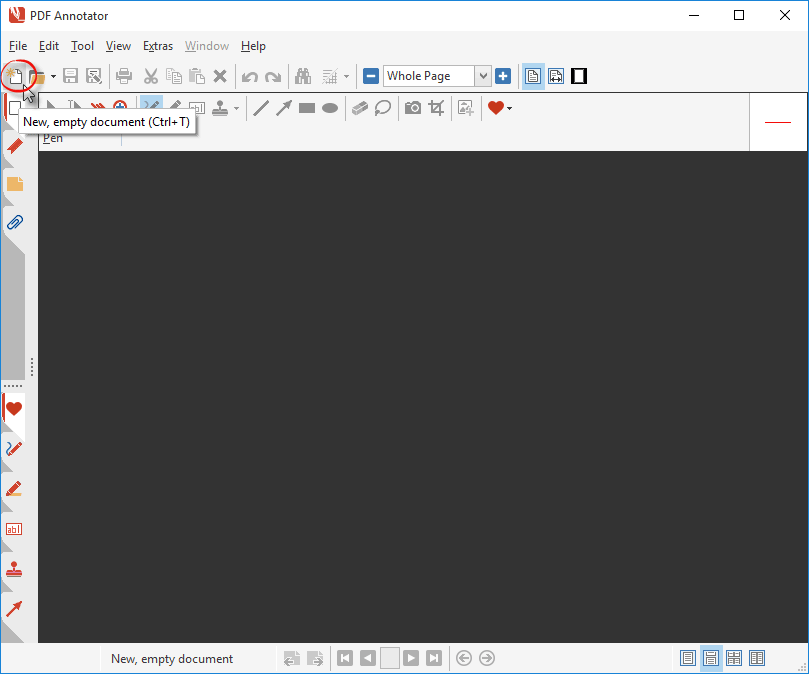
Next, we open the Stamp toolbox with a click onto the tab on the left with the stamp icon on it.
Although, this is just an optional step, let's first create a new group within the stamp toolbox, for our own stamps.
Click the Tool icon on top of the toolbox, and select Create New Group....
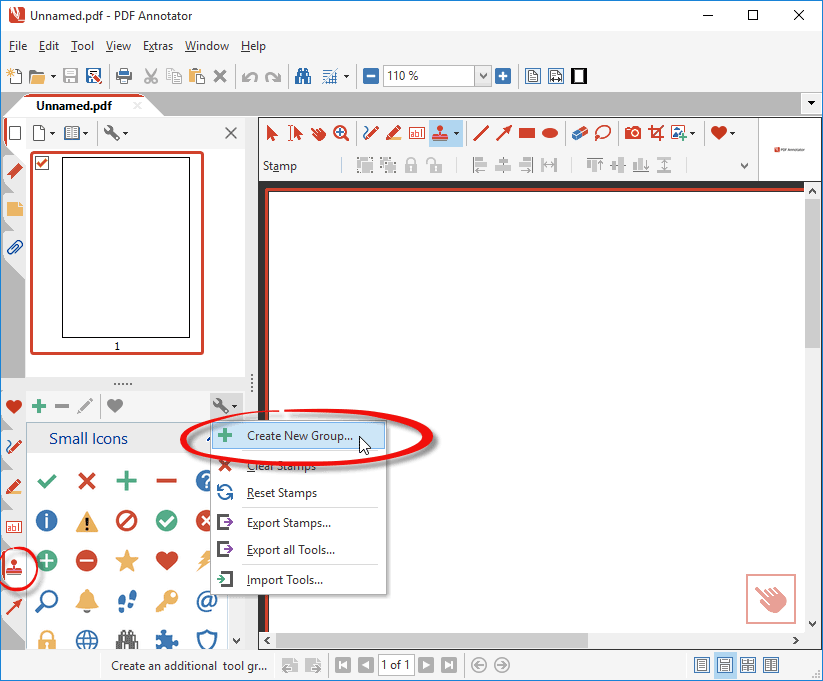
Enter a name for your group and click OK.
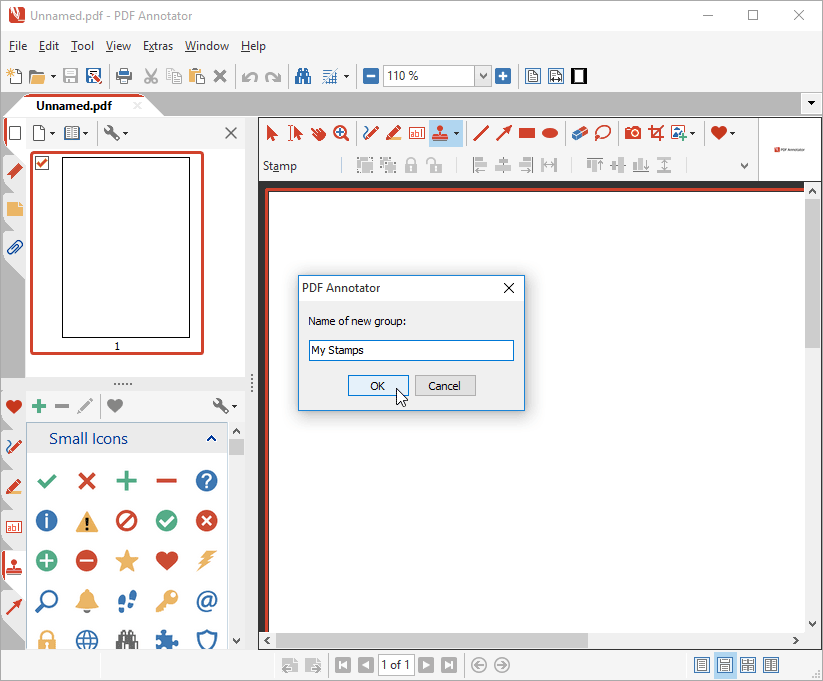
As you see below, the new tool group has been created within the Stamps toolbox. In our example, we chose the name "My Stamps".
Now, click the Plus button on top of the toolbox.
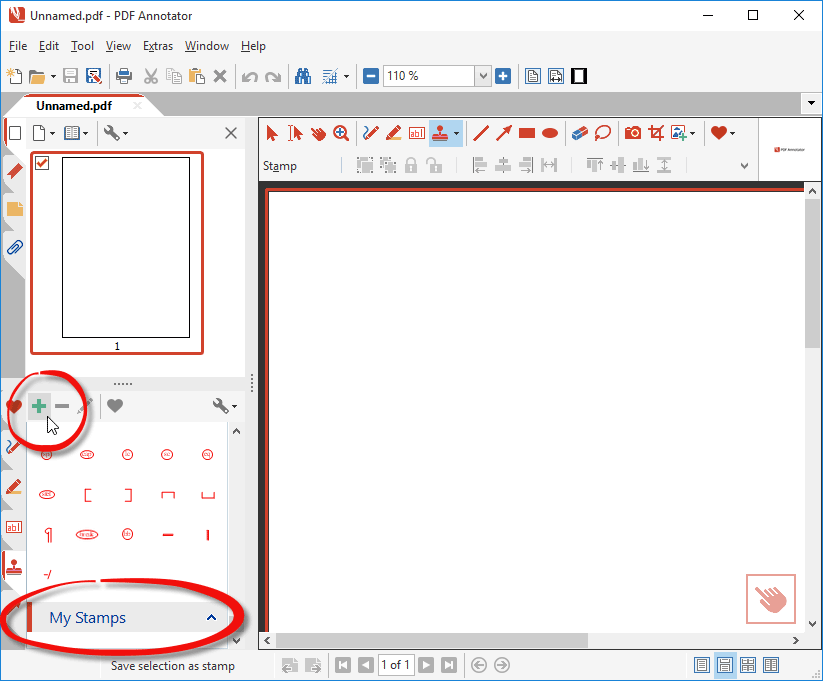
This will open the Configure Tool... window, where, under Create stamp from, we're going to click the Image button, and click From File... on the button's menu.
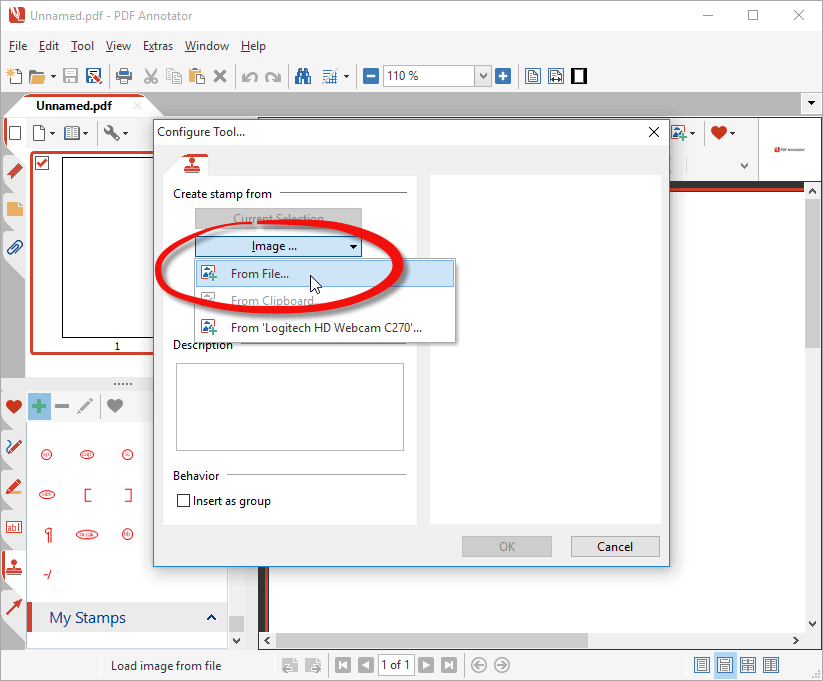
This will bring up an Open dialog, where we can navigate to the image file we want to convert into a stamp. After selecting that file, and pressing the Open button, PDF Annotator will display the image we chose in the Edit Image window.
In our example, we chose an image file that contains the PDF Annotator logo.
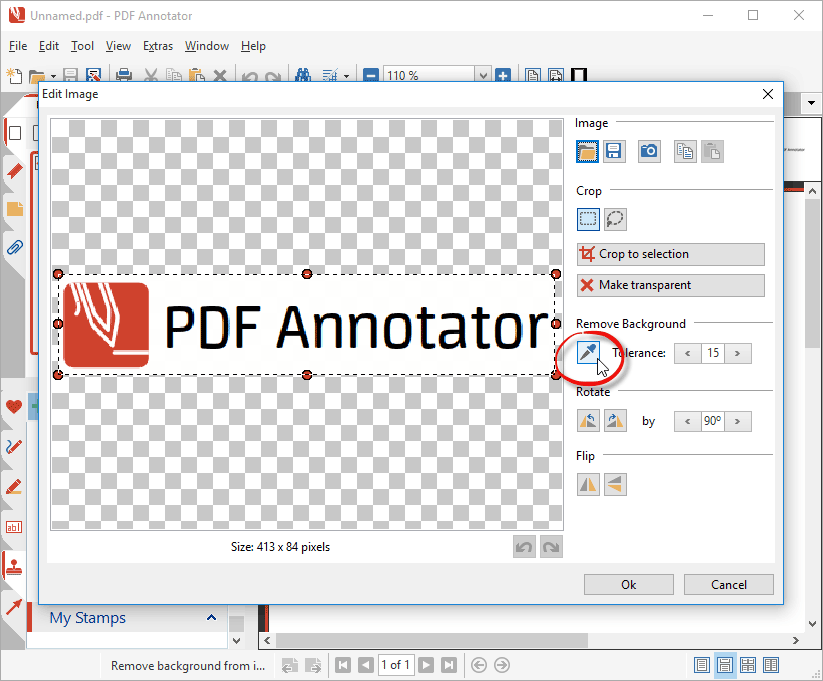
We're now going to use the Remove Background tool to make parts of the image transparent.
Let's click the Pipette tool, and then, click all the areas in our image, that we want to make transparent.
In our example, I first clicked into the white background, then I clicked into all white spots surrounded by letters, until everything is transparent.
When you're not happy with what you clicked, you can always use the Undo and Redo button below the image to get back to your previous steps.
You can also play with the Tolerance value on the right side of the Pipette button if you wish to make the tool more or less sensitive. A higher tolerance will make larger parts of the image transparent. A small tolerance will only make parts transparent which have a very high color similarity to the spot you click with the pipette tool.
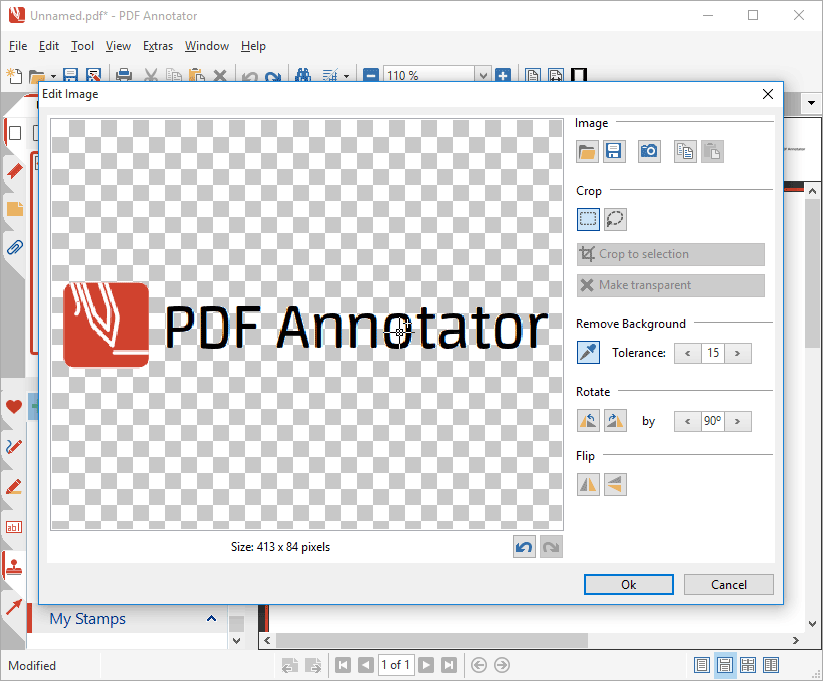
Of course, we could make use of more options in the Edit Image window to modify the image before creating a stamp from it, though.
When done making the image transparent, clicking OK gets us back to the Configure Tool window.
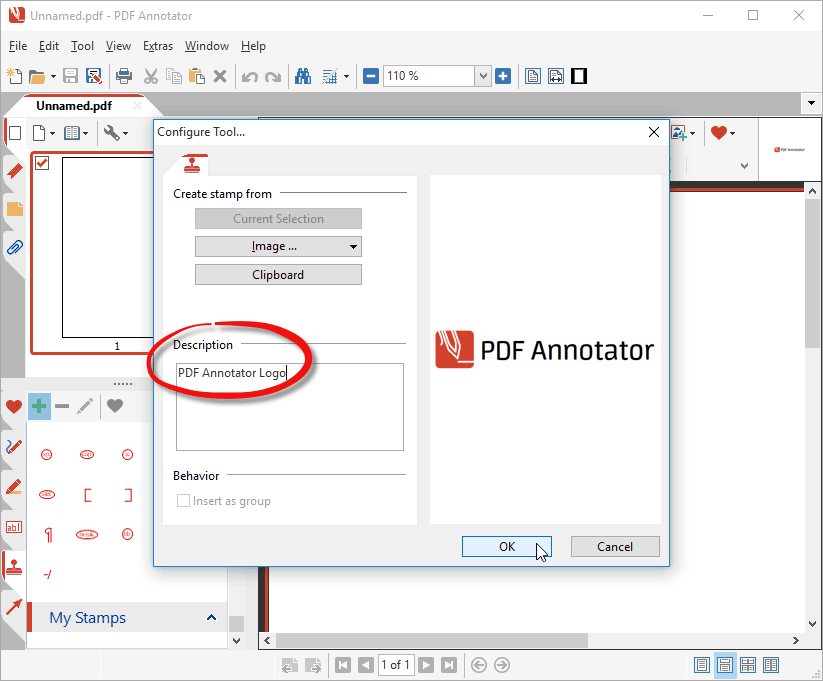
Before we press OK again to finally create the stamp, we can enter a Description for stamp. This will later make it easier to identify the stamp on the toolbox, as the description will get displayed as a small tooltip when you hover of the stamp in the toolbox.
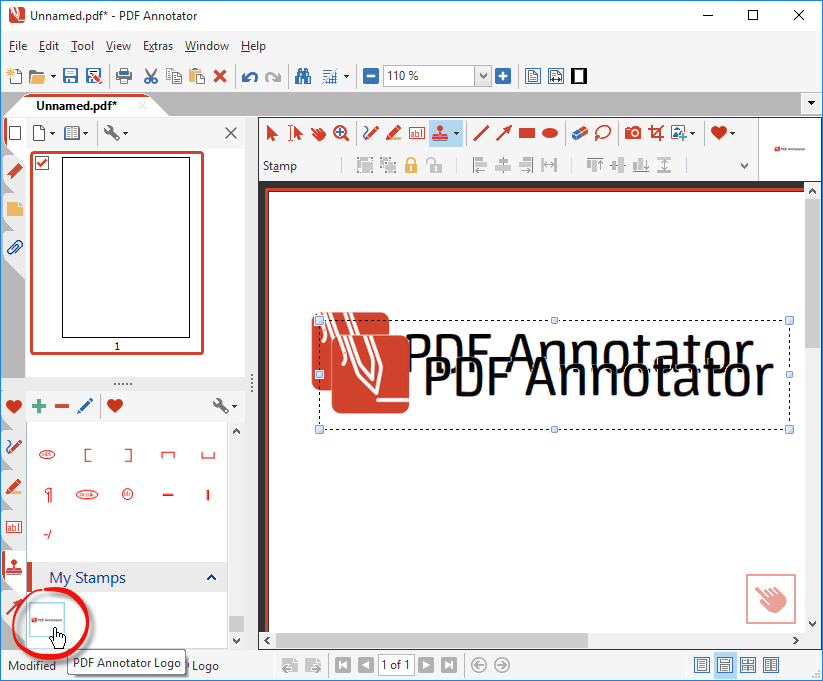
Let's try the new stamp right away! Just click the stamp in the toolbox, and click somewhere into the blank document to place it. Et voilà! Here it is!
As you see, I applied the stamp twice to visualize its transparency.